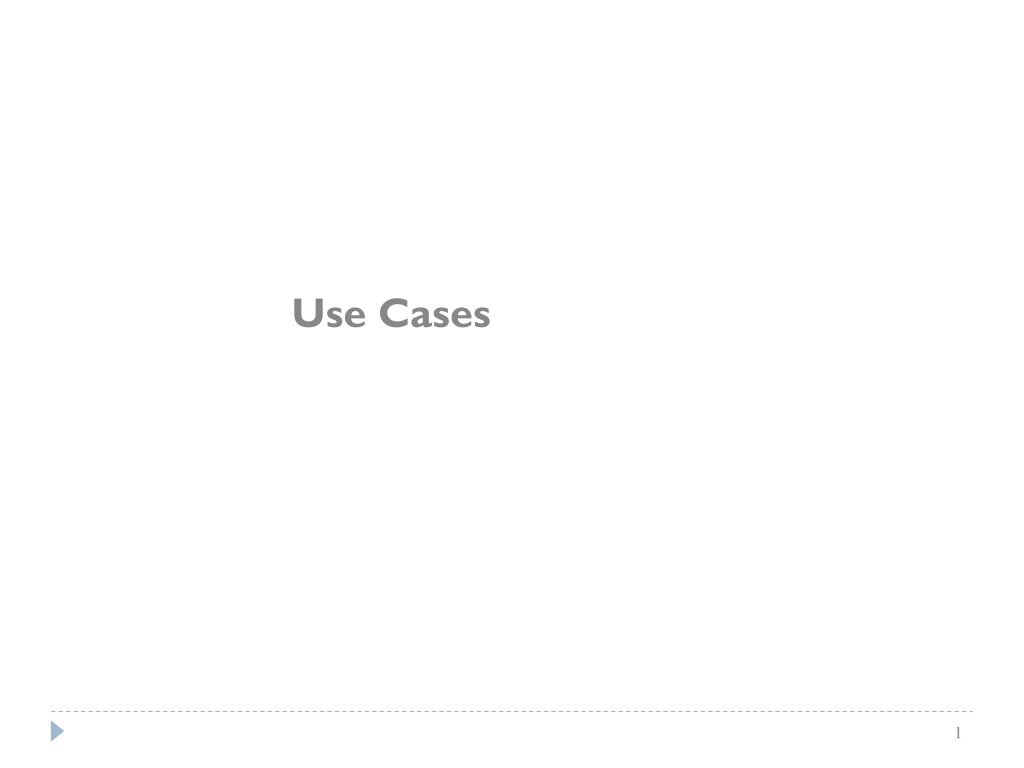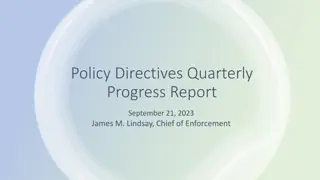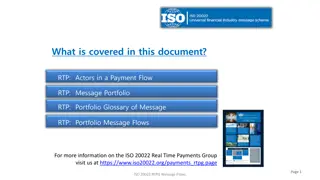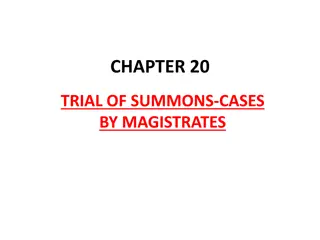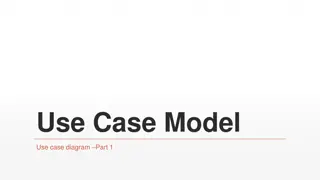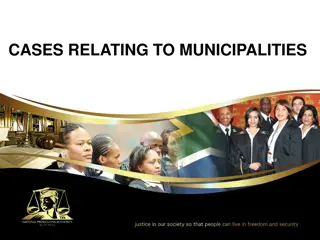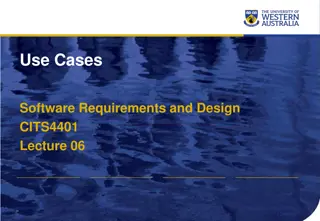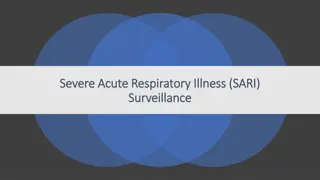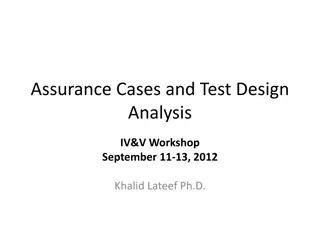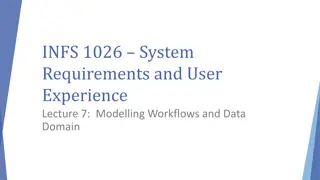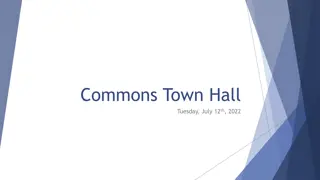Understanding Use Cases and Actors in System Design
Explore the concept of use cases in system design, including user goals versus interactions, system boundaries, actors, and how they all come together in use case diagrams. Learn how use cases capture user-visible functions, achieve discrete goals, and represent the interactions between actors and the system. Gain insights into defining user goals, capturing user interactions, and creating sequences of interactions to understand system behavior better.
Download Presentation

Please find below an Image/Link to download the presentation.
The content on the website is provided AS IS for your information and personal use only. It may not be sold, licensed, or shared on other websites without obtaining consent from the author. Download presentation by click this link. If you encounter any issues during the download, it is possible that the publisher has removed the file from their server.
E N D
Presentation Transcript
What is a Use-Case A use-case captures some user visible function This may be a large or small function A use-case achieves a discrete goal for the user Examples Format a document Request an elevator 2 05-Use-Cases
User Goals versus User Interactions Consider the following when formatting a document Define a style Change a style Copy a style from one document to the next versus Format a document Ensure consistent formatting of two documents The first are user interactions Things the user does to the system to achieve the goal The last is a user goal Something the user wants to achieve 3 05-Use-Cases
Goals and Interactions There is a place for both goals and interactions Understand what the system shall do Capture the user goals Understand how the user will achieve the goals Capture user interactions Sequences of user interactions Thus, start with the user goals and then refine the user goals into several (many) user interactions 4 05-Use-Cases
Use Case Diagrams A cashier uses the to scan an item. POS system A cashier uses the POS system to total items. 20
System Boundary Marks off the system as separate from its environment Actors are outside When no system boundaryis shown, the system is assumed 21
Actor Someone or something outside the system that interacts with it Actors represent roles individuals not Smith 22
Actors An actor represents a set of roles that users of use case play when interacting with these use cases. Actors can be human or automated systems. Actors are entities which require help from the system to perform their task or are needed to execute the system s functions. Actors are not part of the system. Name
Use Cases and Actors From the perspective of a given actor, a use case does something that is of value to the actor, such as calculate a result or change the state of an object. The Actors define the environments in which the system lives
Use Case A use case achieves a goal of value to an actor Defines a task which must be supportedby the system What system is for not how it does it Starts with an active verb from the point of view of the system 23
Relationships between Use Cases 1. Generalization - use cases that are specialized versions of other use cases. 2. Include - use cases that are included as parts of other use cases. Enable to factor common behavior. 3. Extend - use cases that extend the behavior of other core use cases. Enable to factor variants.
Online Car Rental System A customer can browse available cars. A customer can create a new car reservation. The system validates credit card information by communicating with an online credit card validator system. A clerk can view and print car reservations.
Use Case Diagram 1 (No use of includes/extends)
Use Case Description 1 - Create a New Reservation Primary Actor: Customer Secondary Actor: Online Visa Card Validator System Pre-conditions: Customer is on the main page. Post-conditions: If the basic flow was successful, a new reservation is created. Otherwise, the system state is unchanged.
Basic flow actor system 1. Customer selects the Create a New Reservation option. 2. System requests reservation information [pickup location, pickup date, return date, pickup time, return time, and vehicle]. 4. System requests customer information [first name, last name, email address, driver s license number, credit card number and date] 6. System sends credit card information [first name, last name, credit card number and date] to Online Visa Card Validator System. 3.Customer submits reservation information. 5. Customer submits his/her information. 7. Online Visa Card Validator System validates credit card information. 8.Online Visa Card Validator System sends a message acknowledging credit card validation to System. 9. System displays a message confirming the new reservation and showing the reservation details. 10. System sends an email message to Customer s email address confirming the new reservation and showing the reservation details.
Use Case Diagram 2 (Use of includes/extends)
Use Case Description 2 Create a New Reservation Primary Actor: Customer Secondary Actor: Online Visa Card Validator System Pre-conditions: Customer is on the main page. Basic Flow: 1. Customer selects the Create a New Reservation option. 2. System requests reservation information [pickup location, pickup date, return date, pickup time, return time, and vehicle]. 3. Customer submits reservation information. 4. System requests customer information [first name, last name, email address, driver s license number, credit card number and date] 5. Customer submits his/her information. 6. Execute the Validate Credit Card Information use case. 7. System displays a message confirming the new reservation and showing the reservation details. 8. System sends an email message to Customer s email address confirming the new reservation and showing the reservation details. Post-conditions: If the basic flow was successful, a new reservation is created. Otherwise, the system state is unchanged.
Alternative Flows UCD 1 In Step 7, credit card information is not valid: Online Visa Card Validator System sends an error message to System. System displays the error message to Customer. Repeat from Step 4. In Step 3, necessary reservation information is missing: System displays an error message requesting the missing information. Repeat from Step 2. In Steps 3 and 5, a timeout occurs: System displays a timeout error message. Customer is returned to the main page.
Extra Examples http://gyan.frcrce.ac.in/~surve/OOAD/UCD/UCD_CaseSt udy.html
